The compact SUV segment is one of the most competitive in the automotive industry, with various models vying for attention from consumers. Today, we’ll take a closer look at two popular choices: the Audi Q3 and the VW Tayron. While both vehicles hail from reputable manufacturers, they each bring unique strengths and innovations to the table.
Audi Q3 vs VW Tayron – Which car suits you better?
Two cars, one duel: Audi Q3 meets VW Tayron.
Which one wins in performance, efficiency and value for money? Find out now!
Design and Dimensions
The Audi Q3 measures 4484 mm in length and 1849 mm in width, standing at a height of 1585 mm. It boasts a sleek and sophisticated exterior that is quintessentially Audi, complete with a bold front grille and sharp LED headlights. With a trunk capacity of 530 liters, it provides ample space for both passengers and cargo.
On the other hand, the VW Tayron is slightly larger, measuring 4792 mm in length and 1853 mm in width, with a height of 1668 mm. Its design leans towards a robust and modern aesthetic, showcasing VW's signature styling cues. The Tayron takes the lead in trunk capacity, offering an impressive 885 liters, perfect for family adventures or weekend getaways.
Powertrains and Performance
Under the hood, the Audi Q3 offers a range of engine options. Consumers can choose from petrol and diesel variants, with horsepower ranging between 150 and 245 HP. With its dual-clutch automatic transmission and available all-wheel drive, the Q3 can accelerate from 0-100 km/h in as little as 5.8 seconds. The fuel consumption varies from 5.5 to 8.5 L/100km, depending on the engine configuration, making it relatively efficient for its class.
The VW Tayron, meanwhile, presents a diversified engine lineup, including petrol MHEV, plug-in hybrid, and diesel options, with power ranging from 150 to a robust 272 HP. Its acceleration times are impressive as well, with the quickest variants achieving 0-100 km/h in just 6.1 seconds. The Tayron maintains a competitive edge in fuel economy, offering consumptions between 5.4 and 7.8 L/100km and electric-only range options of up to 126 km for hybrid versions.
Technological Innovations
Both models showcase significant technological advancements aimed at enhancing the driving experience. The Audi Q3 comes equipped with the latest MMI infotainment system, featuring a high-resolution touchscreen display, voice recognition, and smartphone integration. Beyond entertainment, it also offers advanced driver-assistance features such as adaptive cruise control, lane-keeping assist, and parking assist.
The VW Tayron, in turn, emphasizes versatility with its infotainment system, including a Digital Cockpit that provides customizable displays for navigation, performance metrics, and media. On the safety front, the Tayron also boasts a suite of advanced driver-assistance technologies, including travel assist and an adaptive front-lighting system to enhance nighttime visibility.
Comfort and Interior Quality
Inside the Audi Q3, high-quality materials enhance the luxurious feel. With seating for five, it offers excellent comfort for both front and rear passengers, accentuated by ambient lighting and spacious legroom. The rear seats are adjustable, adding further flexibility for cargo space when needed.
The VW Tayron, while slightly utilitarian in design, doesn’t compromise on comfort. The interior layout is practical and user-friendly, with quality finishes and a spacious cabin that also comfortably seats five. The open cockpit design gives a commanding view of the road, while the rear seats also offer a similar adjustability feature as the Q3, ensuring a versatile interior space.
Conclusion: Audi Q3 vs. VW Tayron
Ultimately, the choice between the Audi Q3 and the VW Tayron will depend on buyer preferences. The Q3 caters to those looking for a rugged yet luxurious SUV experience with sophisticated tech features. In contrast, the Tayron appeals to those seeking practicality and innovation, especially in hybrid configurations.
Both vehicles are well-equipped to meet the demands of modern drivers, making them top contenders in the compact SUV segment. Test-driving each model is highly recommended to truly appreciate their distinctive qualities and innovations.
Here’s where it gets real: The technical differences in detail
Costs and Efficiency:
When it comes to price and running costs, the biggest differences usually appear. This is often where you see which car fits your budget better in the long run.
Audi Q3 has a hardly perceptible advantage in terms of price – it starts at 38200 £, while the VW Tayron costs 39000 £. That’s a price difference of around 750 £.
Fuel consumption also shows a difference: VW Tayron manages with 0.40 L and is therefore significantly more efficient than the Audi Q3 with 1.70 L. The difference is about 1.30 L per 100 km.
As for range, the VW Tayron performs slight better – achieving up to 126 km, about 7 km more than the Audi Q3.
Engine and Performance:
Under the bonnet, it becomes clear which model is tuned for sportiness and which one takes the lead when you hit the accelerator.
Both models deliver identical power – 272 HP each.
In acceleration from 0 to 100 km/h, the Audi Q3 is slight quicker – completing the sprint in 5.70 s, while the VW Tayron takes 6.10 s. That’s about 0.40 s faster.
There’s no difference in top speed – both reach 240 km/h.
Both models offer the same torque – 400 Nm.
Space and Everyday Use:
Cabin size, boot volume and payload all play a role in everyday practicality. Here, comfort and flexibility make the difference.
Both vehicles offer seating for 5 people.
In curb weight, Audi Q3 is barely noticeable lighter – 1635 kg compared to 1682 kg. The difference is around 47 kg.
In terms of boot space, the VW Tayron offers decisively more room – 885 L compared to 488 L. That’s a difference of about 397 L.
In maximum load capacity, the VW Tayron performs distinct better – up to 2090 L, which is about 704 L more than the Audi Q3.
When it comes to payload, VW Tayron slight takes the win – 566 kg compared to 535 kg. That’s a difference of about 31 kg.
Who wins the race?
The VW Tayron proves to be leaves the rival little chance and therefore becomes our DriveDuel Champion!
VW Tayron is the better all-rounder in this comparison.
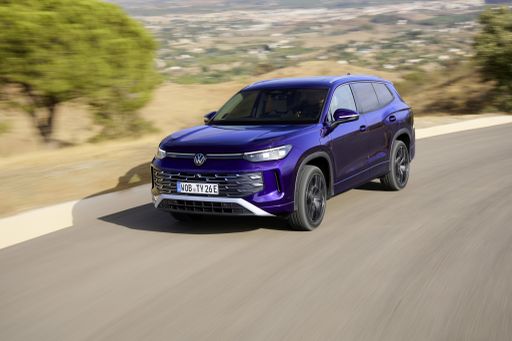 @ Volkswagen AG / VW Media
@ Volkswagen AG / VW Media
VW Tayron
Audi Q3
The Audi Q3 feels like a grown-up compact SUV with premium polish and city-friendly agility, the sort of car that makes weekend escapes and daily commutes equally satisfying. Inside, you get quality materials and smart packaging that keep things practical without skimping on style, so it’s an easy pick for buyers who want luxury without the drama.
details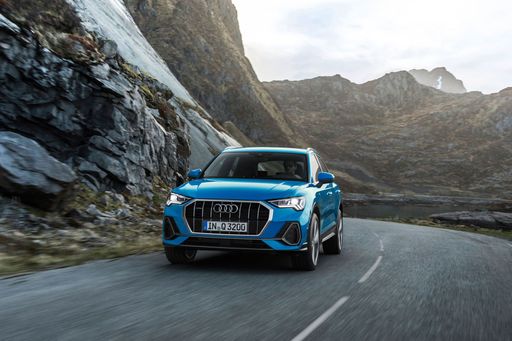 @ Audi AG
@ Audi AG
 @ Audi AG
@ Audi AG
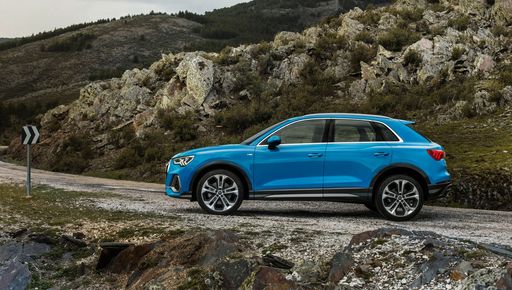 @ Audi AG
@ Audi AG
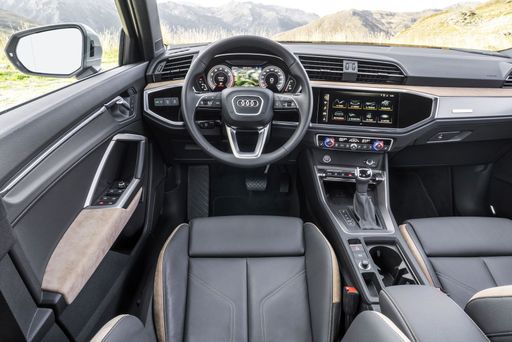 @ Audi AG
@ Audi AG
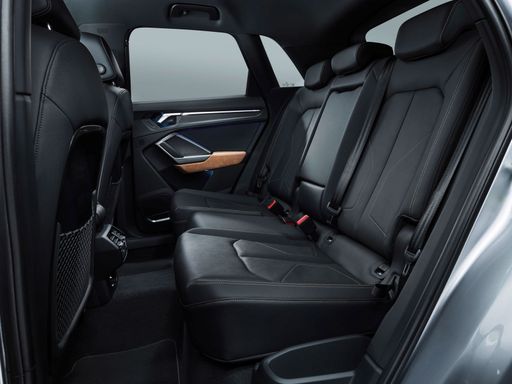 @ Audi AG
@ Audi AG
VW Tayron
The VW Tayron is Volkswagen's roomy, no-nonsense SUV that pairs clean, familiar styling with a practical cabin built for families and everyday use. It rides comfortably, packs sensible tech and creature comforts, and feels like the sensible sweater of SUVs for buyers who prefer steady value over headline-grabbing drama.
details @ Volkswagen AG / VW Media
@ Volkswagen AG / VW Media
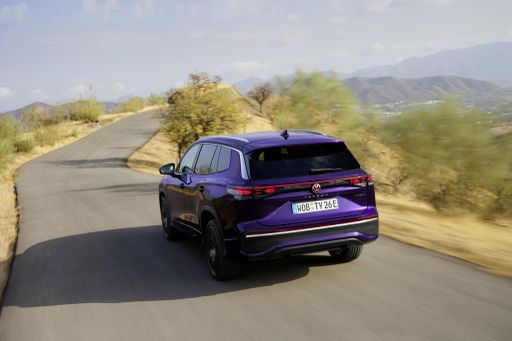 @ Volkswagen AG / VW Media
@ Volkswagen AG / VW Media
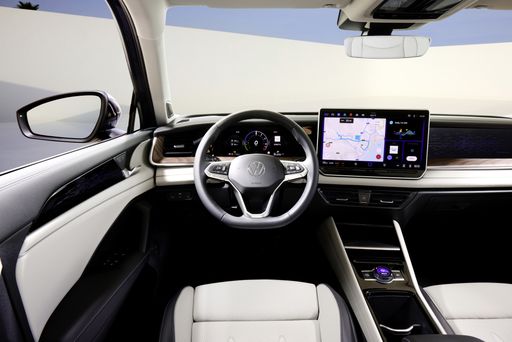 @ Volkswagen AG / VW Media
@ Volkswagen AG / VW Media
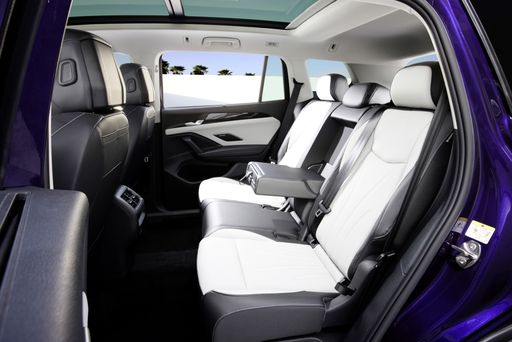 @ Volkswagen AG / VW Media
@ Volkswagen AG / VW Media
 @ Audi AG
@ Audi AG
|
 @ Volkswagen AG / VW Media
@ Volkswagen AG / VW Media
|
|
|
|
Costs and Consumption |
|
|---|---|
|
Price
38200 - 52900 £
|
Price
39000 - 52600 £
|
|
Consumption L/100km
1.7 - 8.6 L
|
Consumption L/100km
0.4 - 8.5 L
|
|
Consumption kWh/100km
-
|
Consumption kWh/100km
-
|
|
Electric Range
118 - 119 km
|
Electric Range
117 - 126 km
|
|
Battery Capacity
19.70 kWh
|
Battery Capacity
19.70 kWh
|
|
co2
39 - 195 g/km
|
co2
9 - 192 g/km
|
|
Fuel tank capacity
45 - 60 L
|
Fuel tank capacity
45 - 58 L
|
Dimensions and Body |
|
|---|---|
|
Body Type
SUV
|
Body Type
SUV
|
|
Seats
5
|
Seats
5
|
|
Doors
5
|
Doors
5
|
|
Curb weight
1635 - 1900 kg
|
Curb weight
1682 - 1948 kg
|
|
Trunk capacity
375 - 488 L
|
Trunk capacity
705 - 885 L
|
|
Length
4531 mm
|
Length
4792 mm
|
|
Width
1859 mm
|
Width
1853 - 1866 mm
|
|
Height
1559 - 1601 mm
|
Height
1666 - 1668 mm
|
|
Max trunk capacity
1196 - 1386 L
|
Max trunk capacity
1915 - 2090 L
|
|
Payload
505 - 535 kg
|
Payload
489 - 566 kg
|
Engine and Performance |
|
|---|---|
|
Engine Type
Petrol MHEV, Petrol, Plugin Hybrid, Diesel
|
Engine Type
Petrol MHEV, Plugin Hybrid, Diesel, Petrol
|
|
Transmission
Automatic
|
Transmission
Automatic
|
|
Transmission Detail
Dual-Clutch Automatic
|
Transmission Detail
Dual-Clutch Automatic
|
|
Drive Type
Front-Wheel Drive, All-Wheel Drive
|
Drive Type
Front-Wheel Drive, All-Wheel Drive
|
|
Power HP
150 - 272 HP
|
Power HP
150 - 272 HP
|
|
Acceleration 0-100km/h
5.7 - 9.2 s
|
Acceleration 0-100km/h
6.1 - 9.7 s
|
|
Max Speed
208 - 240 km/h
|
Max Speed
204 - 240 km/h
|
|
Torque
250 - 400 Nm
|
Torque
250 - 400 Nm
|
|
Number of Cylinders
4
|
Number of Cylinders
4
|
|
Power kW
110 - 200 kW
|
Power kW
110 - 200 kW
|
|
Engine capacity
1498 - 1984 cm3
|
Engine capacity
1498 - 1984 cm3
|
General |
|
|---|---|
|
Model Year
2025
|
Model Year
2025
|
|
CO2 Efficiency Class
E, G, B
|
CO2 Efficiency Class
E, B, F, G
|
|
Brand
Audi
|
Brand
VW
|
Is the Audi Q3 offered with different drivetrains?
The Audi Q3 is available as Front-Wheel Drive or All-Wheel Drive.
The prices and data displayed are estimates based on German list prices and may vary by country. This information is not legally binding.
